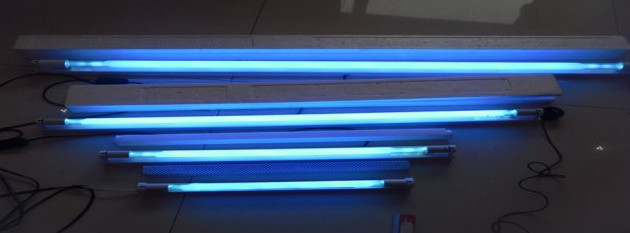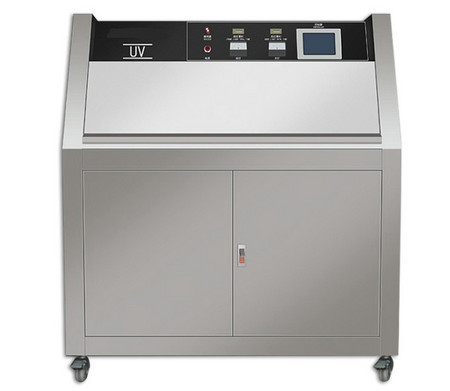
NewsInformation Center
The 7 aging test methods of aging test chamber
2022/06/22
What is the aging test?
Aging test mainly refers to the thermal and oxygen aging test for rubber, plastic products, electrical insulation materials and other materials; or for electronic spare parts, plasticized products for gas exchange aging test.
At present, there are many aging test methods for studying polymer materials, mainly including climate aging test, UV aging test, ozone aging test, hot air aging test, high and low temperature alternating aging test, hot and humid aging test, medium aging test, salt spray aging test, etc.
The 7 aging test methods of aging test chamber:
The 7 aging test methods of aging test chamber:
1、Climate aging test
The so-called climate aging test is a research method to expose the polymer material test sample to the atmospheric environment, so as to obtain the aging law of the material sample under the atmospheric environment exposure, analyze the performance of the polymer material and predict its service life.
The climatic aging test can be further divided into two types.
One of them is the natural exposure test, in which the polymer material test sample is exposed to the real atmospheric environment to obtain the aging behavior of the material in the real environment. The aging information obtained by this aging test method is the most accurate and the most effective method to obtain the aging behavior of polymer materials, but the cycle time of this test method is too long and time-consuming. Atmospheric exposure tests have been conducted in Florida, USA, Wanning, Mohe and Wuhan, China for more than one year.
Another kind is the artificial climate aging test, which refers to the aging test method of simulating or enhancing an environmental factor to obtain the aging behavior of materials in a short period of time by simulating the real atmospheric conditions indoors, which is also known as artificial simulated aging or artificial accelerated aging. Artificial climate aging is usually carried out in an artificial climate aging chamber. The main artificial climate aging chambers used are xenon climate aging chambers, fluorescent lamp climate aging chambers and carbon arc lamp climate aging chambers. These climate aging chambers are used to simulate or enhance the natural environmental factors such as light, temperature, humidity, rain or condensation to achieve the aging of materials. In addition, the aging test of materials should be carried out according to certain testing standards.
2、UV aging test
The ultraviolet light in sunlight, because its light energy is comparable to the bond energy of polymer chemical bonds, can cause the breakage of polymer compound chains, which is the main factor leading to the aging and degradation of polymer materials. UV aging test is a test method to expose the polymer material aging test sample to UV light field to obtain the aging behavior and law of polymer material.
Usually, the UV aging test will specify the UV zone and irradiation intensity, such as 40W/m2, in the wavelength range of 300nm-400nm, etc. The light source used in UV aging test is usually xenon lamp, fluorescent lamp, tritium lamp and deuterium lamp, etc. The xenon lamp can simulate the solar spectrum well, the fluorescent lamp can simulate the UV spectrum of sunlight well, and the tritium lamp provides stronger energy, which is generally used to do accelerated aging test.
3、Ozone aging test
Ozone is a rare gas in the atmosphere, but it is very destructive to polymer materials. Ozone can have irreversible chemical reactions with unsaturated bonds and reductive groups in the chemical structure of polymer materials, resulting in oxidative degradation of polymer materials and thus losing their use value. Especially for rubber materials containing double bonds, it shows a very strong destructive power.
Ozone is highly reactive and it can decompose more reactive atomic oxygen to chemically react with the double bonds in rubber molecules, leading to aging, cracking and brittleness of rubber. The ozone aging test of polymer materials is usually carried out in the ozone aging chamber, and the ozone is provided by the ozone generator, the concentration of which can be adjusted by mixing with air through the mixer, and the concentration of ozone is generally determined according to the environmental conditions in which the materials are actually used. In addition, the temperature and humidity in the ozone aging chamber can also be adjusted to achieve the purpose of the test and obtain the ozone aging resistance of the material as well as the ozone aging behavior and law.
4、Hot air aging test
Heat is one of the main factors that lead to the aging of polymer materials. Heat can accelerate the movement of polymer chains, lead to the breakage of polymer chains, generate active free radicals, cause free radical chain reactions and lead to the degradation or cross-linking of polymers, hot air aging test is one of the main test methods to evaluate polymer materials and study the aging resistance of polymer materials, which is usually carried out in the constant temperature blast drying test chamber.
The temperature inside the drying chamber can be set according to the test requirements, and polymer materials are exposed to regular sampling within the dryness and tested to obtain the aging behavior and law of polymer materials, so as to modify the polymer materials in a targeted manner and improve their performance.
5、Temperature alternating aging test
Temperature is another important factor leading to the aging of polymer materials, for polymer adhesives, high temperature can accelerate the rate of movement of polymer adhesive chain, low temperature can lead to polymer adhesives produce internal stress, high and low temperature alternation leads to polymer adhesives occur chain breakage, aging degradation.

For rubber, high temperature can accelerate the thermal movement of the molecular chain, so that the rubber cross-linking, low temperature can lead to the freezing of the rubber molecular chain, so that it becomes brittle, elasticity decline, aging. High and low temperature alternating aging test is to evaluate the temperature resistance of polymer materials aging test method, usually in the temperature alternating aging test chamber, from a temperature T1 (generally room temperature) to a constant heating rate to a temperature T2, maintain T2 temperature for a certain period of time, and then a constant cooling rate, cooling down to a temperature T3, maintain T3 temperature for a certain period of time, and then in the heating to T1 This is a temperature cycle. Cycle cycle length, according to the specific test requirements.
6、Humidity and heat aging test
Humidity and heat aging test is an effective method to evaluate the aging resistance of polymer materials in high humidity and high temperature environments. In the high humidity environment, moisture can penetrate into the interior of polymer materials, leading to swelling of polymer materials and hydrolysis of some hydrophilic groups, resulting in aging degradation of polymer materials.
In addition, moisture penetration inside the polymer material can also lead to the dissolution and migration of additives inside the polymer material, such as plasticizers, compatibilizers and other substances, which affect the mechanical properties of the polymer material.
In the presence of high heat, heat can again promote this penetration of moisture, and heat promotes increased polymer chain motion and reduced intermolecular forces, which promotes the penetration of moisture and accelerates the degradation of polymer materials [1]. Different polymer materials have different formulations, so their hygrothermal aging mechanisms are not the same, and the hygrothermal aging test should be conducted with different aging standards according to different polymer materials. Damp heat aging test is usually carried out in the damp heat aging test chamber, the temperature and humidity can be set according to the test requirements themselves.
7、Media aging test
Certain polymer materials in the process of use to long-term immersion in a certain medium, such as long-term marine operations or submarine operations on the equipment of polymer materials to long-term immersion in seawater, certain parts of aircraft to long-term exposure to aviation fuel, etc., which require polymer materials have a strong resistance to dielectric aging performance.
Media aging aging test is a common test method to evaluate the aging performance of polymer materials and predict their life in a certain medium. The medium used in the aging test can be prepared according to the specific environment of the polymer material, which can be artificial seawater, salt water, rainwater, acid and alkali solutions, fuel oil and other organic solvents, etc.
For more information about aging test chamber for sale, please leave a message!
Previous: TPP Thermal Protective Performance Tester
N e x t : 4 features of N95 Face Mask tester




